How the Williams Formula One Team Onboards Grand Prix Fans to its NFT Program
Looking to offer a more immersive and engaging experience for Grand Prix racing fans while accelerating enthusiasm for its drivers Alexander Albon and Logan Sargeant, the Williams F1 Racing organization has launched an NFT-based fan engagement program called Grid Pass. Blockchain Journal’s Sophie “Sophie Maxx” Waldman takes a closer look at the onboarding part of the new program’s customer journey.
By Sophie Waldman
Published: November 13, 2023

3 min read
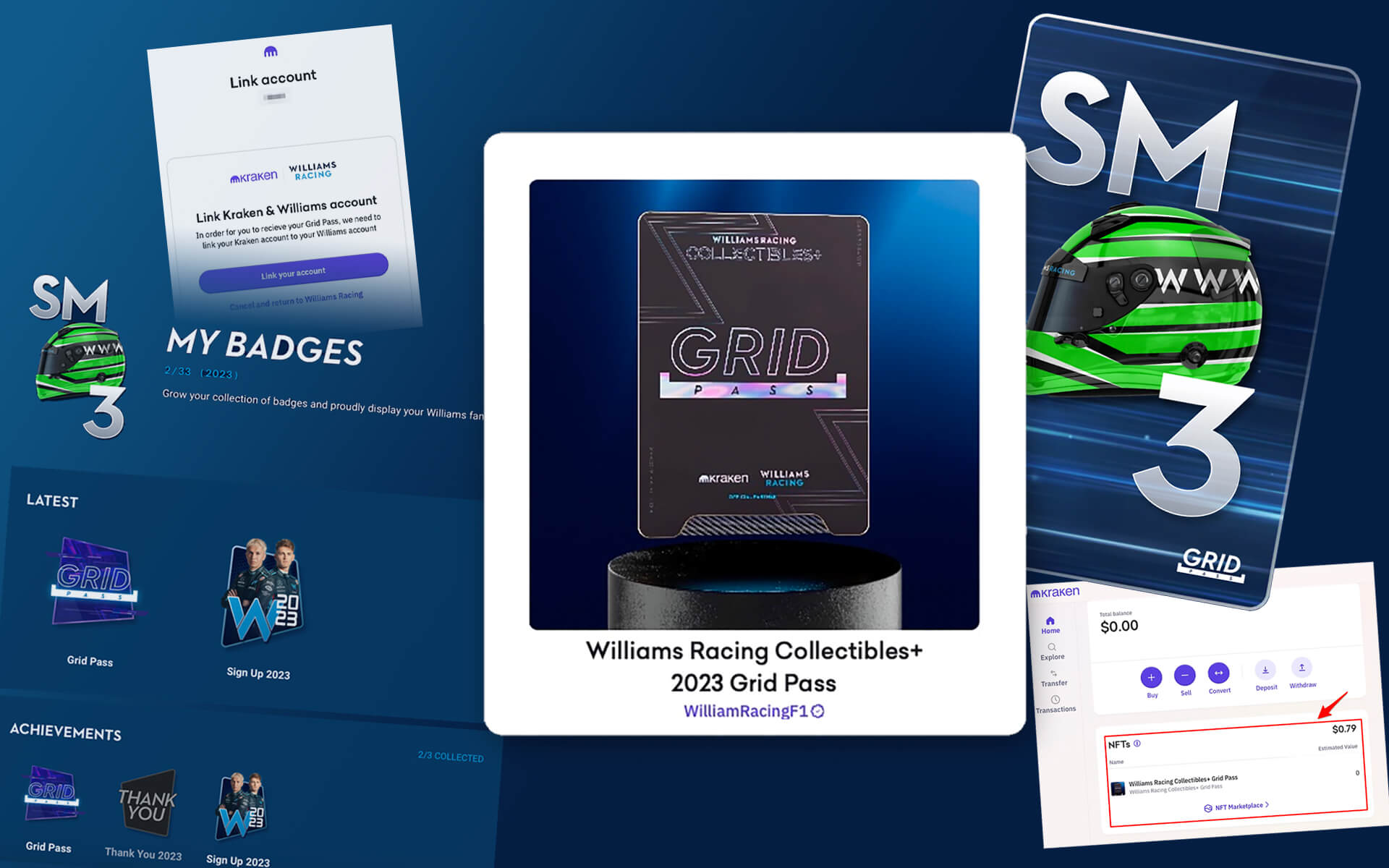

In an effort to jump-start its own NFT fan engagement and loyalty program, the Williams Racing F1 organization — with the support of the Kraken’s exchange, NFT marketplace, and custodial wallet technology — has launched its Grid Pass NFTs at no cost to Grand Prix racing fans. In this review, I take a look at the onboarding experience from the fans’ point of view.
Overall, the customer claim process was seamless and made receiving the Grid Pass NFT easy for any non-Web3-native users. Of course, this is a key objective of the NFT programs belonging to many global brands because of how intimidating and complex many customer-facing crypto and blockchain applications can be.
This review includes some screenshots from my experience along the way, but does not visually document every single step in the workflow.
The first step required making a Williams Racing account, which can be automatically created using a Google or Apple ID. Next, I connected my Williams Racing account to my existing Kraken account, which itself was quick and easy to establish with a few clicks.
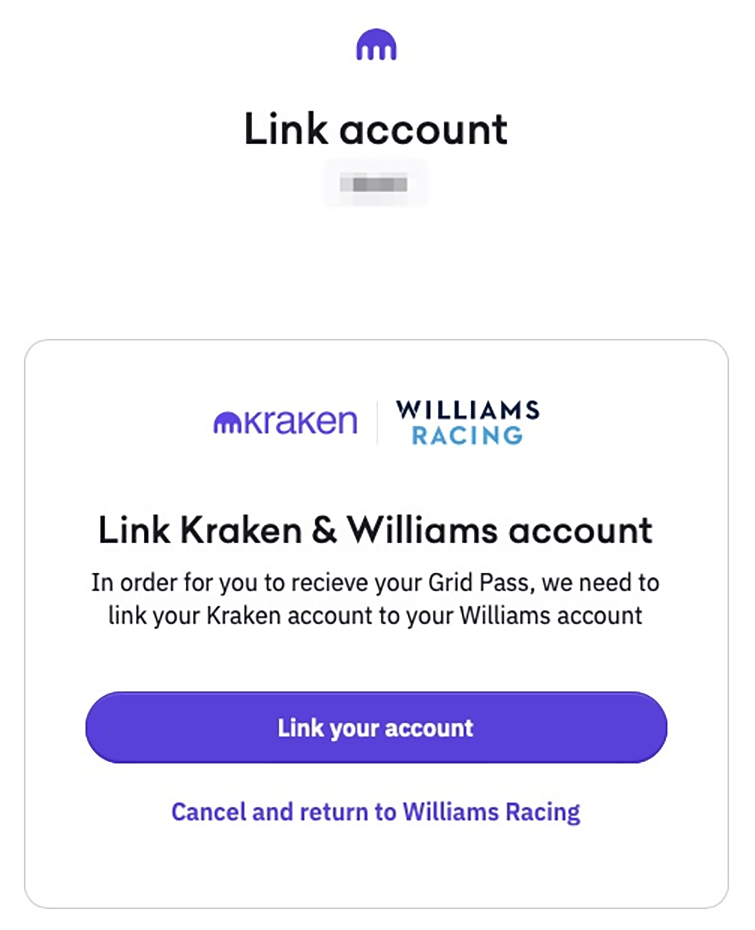

Linking my Kraken account to my Williams Racing account was a seamless process, the bulk of which was hosted on Kraken’s domains. Once the accounts were linked, it was possible for the Williams F1 website to authenticate me as a holder of the Grid Pass NFT and offer exclusive benefits to me that were not available to other fans of the Williams F1 team.
Once logged into both Williams Racing and Kraken, the two accounts appeared in Kraken’s user interface as being linked to one another, which in turn, enabled me to claim my free Grid Pass NFT.
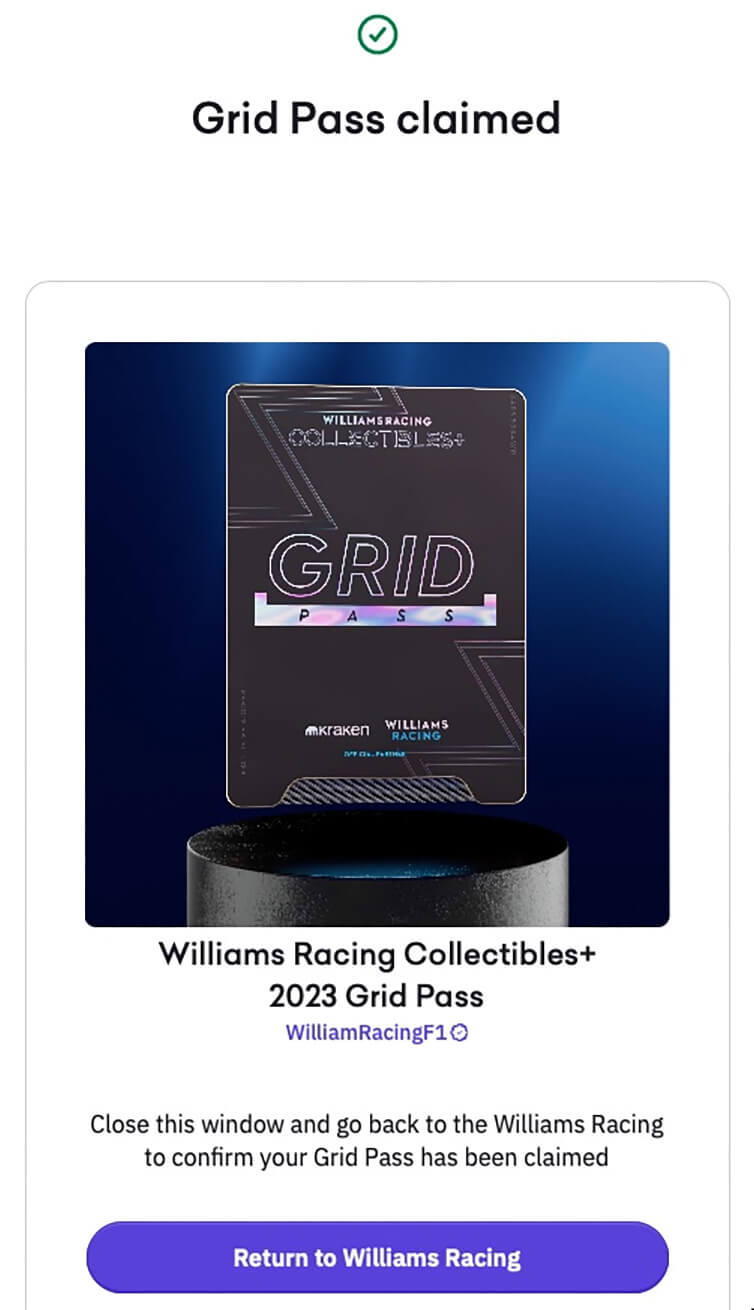

The process for claiming my free Williams Racing F1 Team Grid Pass NFT was remarkably painless given that the end-to-end fan workflow crossed over two separate web domains (Kraken.com and WilliamsF1.com). The entire process took no more than five minutes and required practically no crypto or Web3 knowledge.
After claiming my NFT, I went back to the Williams website to customize my “Drivers Card.” There was a variety of helmet and background designs to choose from, along with the option to choose my own racing number – all of which are displayed on the Grid Pass itself.
After noticing a lock placed over some of the personalizations, I realized that there was an option to pay $1.99 to unlock these “more exclusive” helmet color palettes, graphics, and NFT backgrounds.
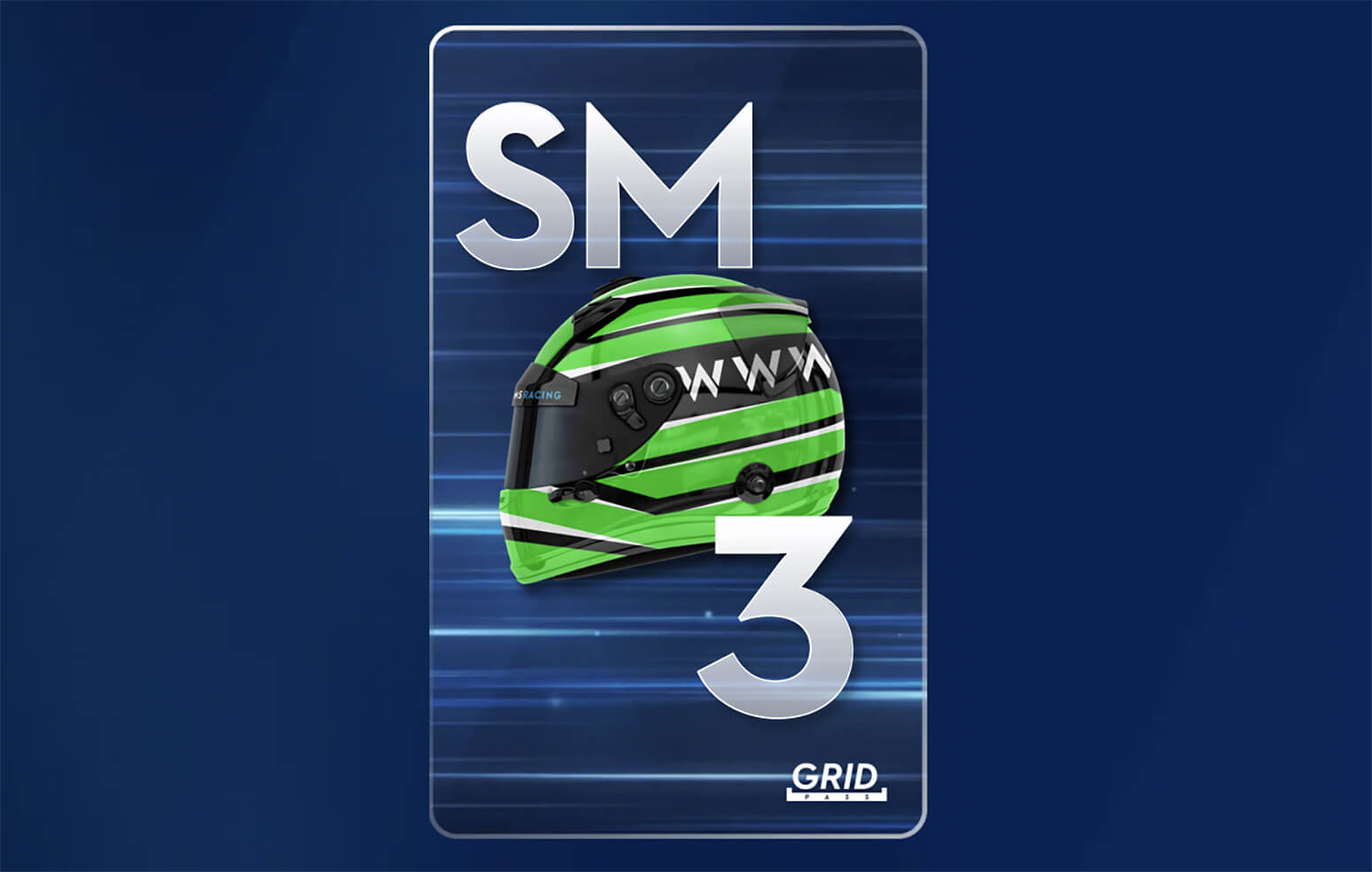

Here’s what my Williams Racing F1 Grid Pass NFT looked like after making several customizations, including the helmet’s graphics, colors, and even my racing number.
After creating my ideal Drivers Card, I headed over to the “My Badges” section of the website to see what there was to look forward to. I was pleasantly surprised to see that I had already earned 2 of the 3 Achievements to date – just by signing up! In a clear attempt to turn me into a revenue-generating fan, the “2023 Thank You” Badge – which I have yet to earn – can apparently be unlocked by completing a first purchase from the Williams online store where all the team merchandise (shirts, jackets, hats and other trinkets) can be purchased.
Some of the badges that will be available to unlock in the future include badges for tuning into any of the 2023 races (essentially a proof-of-attendance application), playing the Pit Wall Predictions, or even scoring 100% on the Predictions during any Grand Prix weekend.


Under the personal profile area of the Williams Racing F1 website, a fan can see which “badges” they’ve earned as well as other badges that are available to them. In this screenshot, the “Achievements” section of the My Badges dashboard shows the two badges that I’ve earned (one for getting the Grid Pass NFT and one for signing up as a 2023 fan of the racing team), as well as a third “Thank You” badge that’s available to me if I purchase some team merchandise through the racing team’s online store.
As most of these badges or experiences correlate to 2023, it’s important to note that the “Grid Pass is meant to be a long-term co-pilot in future Williams Racing adventures,” according to the program’s FAQ.
It’s important to note that, unlike the way the Starbucks Odyssey NFT-based customer loyalty and engagement program rewards similar achievements with “Stamps” that are themselves NFTs, the Williams F1 Badges do not appear to be NFTs. Whereas the “My Badges dashboard” showed that I earned two badges, a review of the NFTs that were tied to my Kraken-hosted custodial wallet (see screenshot below) reflected the possession of one NFT only — the Grid Pass NFT.
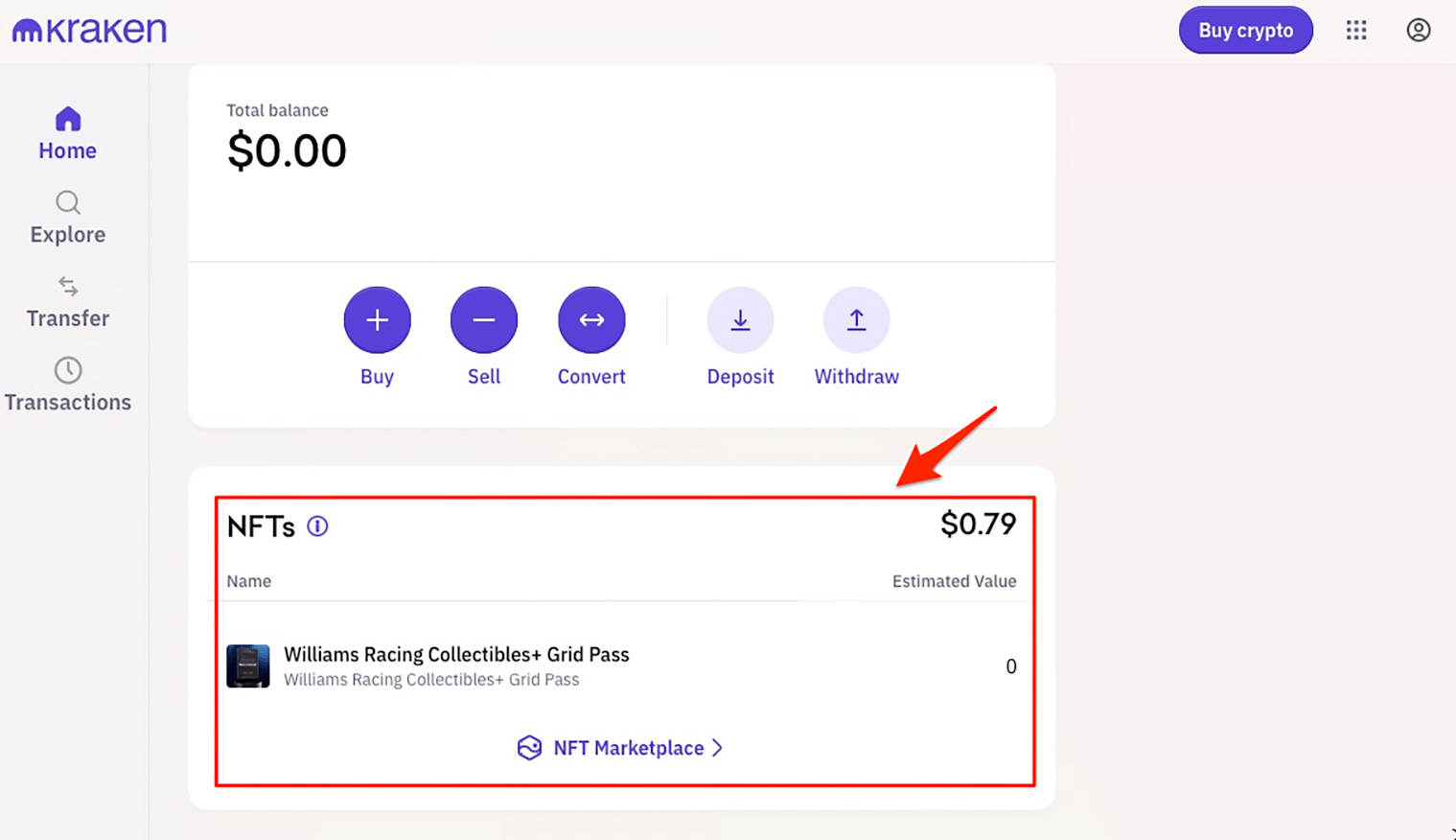

Since the Williams Racing F1 team is working with Kraken’s exchange, custodial wallet and NFT minting technologies, fans can also log into their Kraken account to confirm their possession of the Grid Pass NFT.,
While I wasn’t necessarily a fan of the Williams Racing F1 team before, the ease of onboarding into the racing organization’s NFT program has definitely piqued my interest in the team as well as F1 racing overall.
Editor’s Note: Sophie Waldman’s review of the onboarding leg of the Williams Racing F1 team’s blockchain customer journey is one of many such customer journey reviews that we intend to publish on Blockchain Journal. In addition to our Enterprise Blockchain Adoption Tracker posts (used to document the progress from announcement to the deployment of the many enterprise blockchain projects that cross our radar), these customer journey reviews are meant to help other enterprises and global brands to understand how different user experiences resonate with end users, customers, and other stakeholders.










